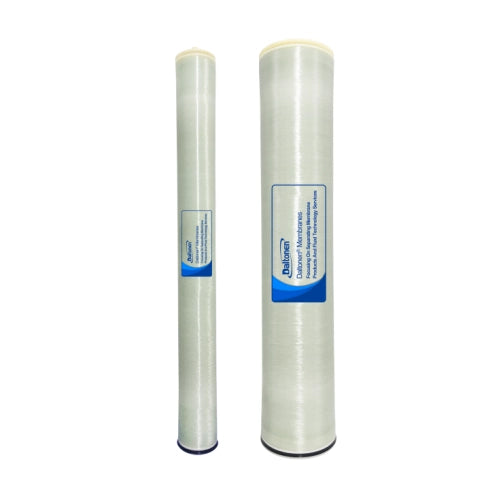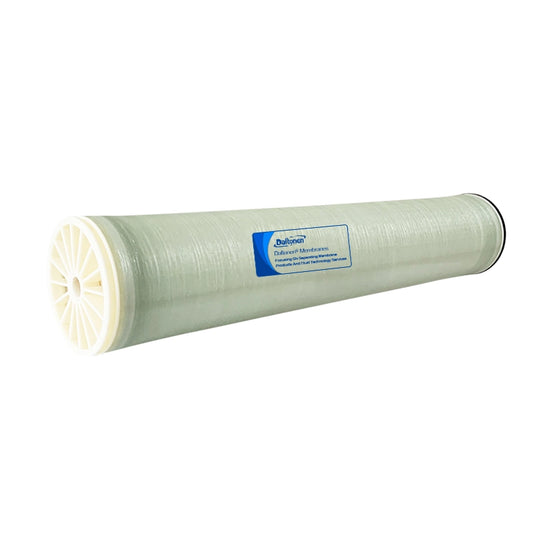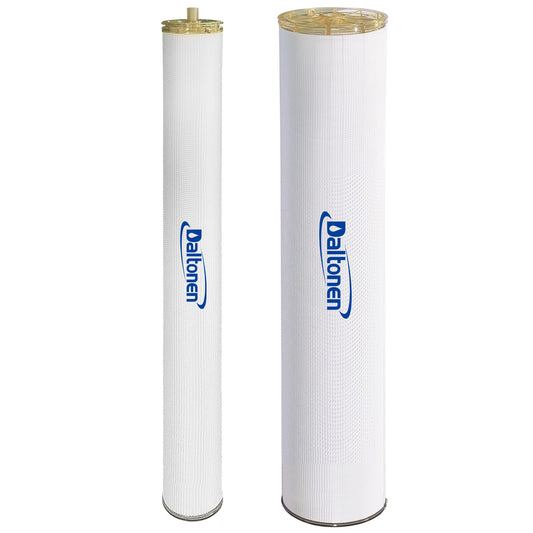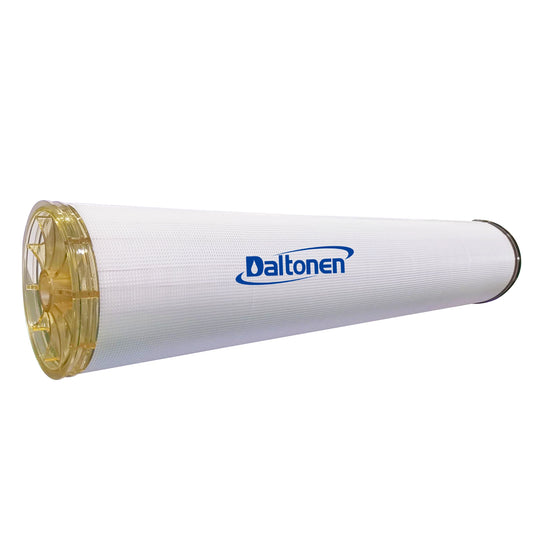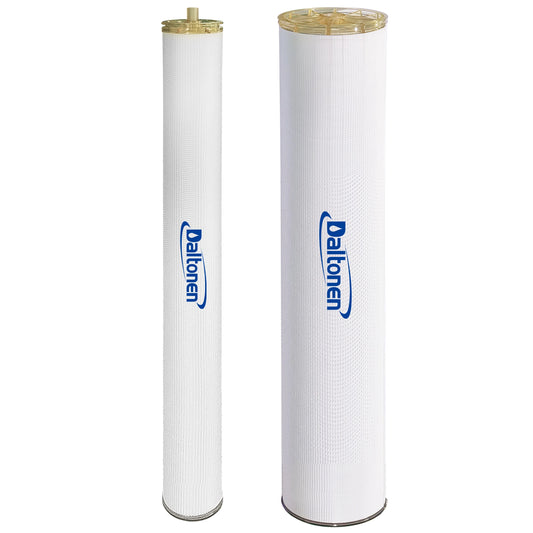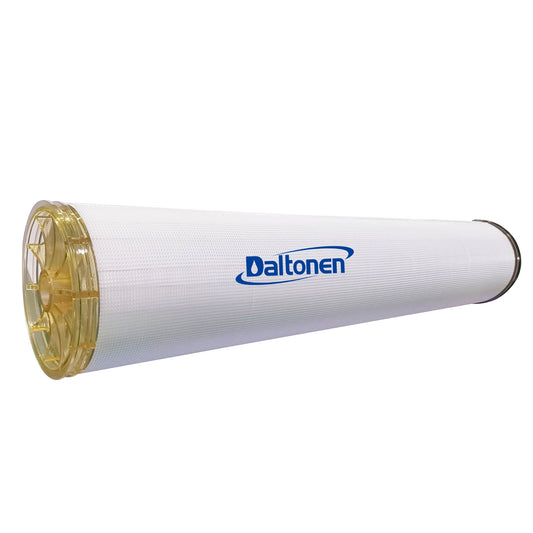RO Membrane Process for High-Salinity Groundwater in South China Region
16 Apr 2025
I. Process Design
Process Flow
1.1 Pre-treatment
-
Screen Filtration: Use sand filters to remove suspended solids and sand particles.
-
Salting Out: Pre-treat with a salt bath (e.g., NaCl solution) to reduce the osmotic pressure of water and improve the quality of RO membrane effluent.
-
UV Disinfection: Disinfect the pre-treated water with ultraviolet (UV) irradiation.
1.2 Reverse Osmosis
-
RO Membrane Operation: Use RO membranes to remove the majority of salts and other impurities.
1.3 Pure Water Collection
-
Collection of High-Purity RO Water: Collect the high-purity RO water and disinfect it (e.g., with UV or chlorination).
1.4 Reuse Treatment
-
Further Treatment of Reused Brine: Treat the reused high-salinity water (e.g., neutralization, precipitation, or distillation) to meet the water quality requirements for reuse.
Detailed Process Steps
2.1 Pre-treatment
-
Sand Filters: Remove suspended solids and sand particles.
-
Salting Out: Pre-treat with NaCl solution, maintaining a salt concentration of 1:20 (NaCl:water).
-
UV Disinfection: Disinfect the pre-treated water using UV lamps.
2.2 Reverse Osmosis
-
High-Performance RO Membrane: Use high-performance RO membranes to remove the majority of salts and impurities.
2.3 Pure Water Collection
-
Collector for RO Water: Collect RO water via a collector and disinfect it with UV or chlorination.
2.4 Reuse Treatment
-
Neutralizer: Neutralize acidic or alkaline substances in RO water.
-
Precipitation Filter: Perform precipitation treatment on the reused high-salinity water to remove suspended solids.
-
Distilled Water Recovery: Distill the reused high-salinity water to collect high-purity water.

II. List of Required Materials
Equipment
1.1 RO Membrane
-
High-Flux RO Membrane: (e.g., with a permeability of 100,000 and an area of 0.5–1 m²).
-
RO Components: (including membrane housing and support structure).
1.2 Pre-treatment Equipment
-
Sand Filters: (for filtering sand and suspended solids).
-
Salting Out Equipment: (salt bath device with NaCl solution concentration of 1:20).
1.3 Pure Water Collection Equipment
-
UV Disinfection Equipment: (UV lamps).
-
Collector: (container for collecting high-purity water).
1.4 Reuse Treatment Equipment
-
Neutralizer: (for neutralizing reused RO water).
-
Precipitation Filter: (for precipitating reused high-salinity water). Distillation system (for further purification of reused water).
1.5 Auxiliary Equipment
-
Acid Cleaning Equipment: (for cleaning RO membranes).
-
Scale Removal Brushes, Filter Nets, Acid-Base Balancers, etc.
1.6 Other Equipment
-
Piping and Connectors: (for water circulation and equipment connection).
-
Control System: (e.g., PLC to control RO operation).
Materials
2.1 RO Membrane
-
High-Flux RO Membrane: (e.g., with a permeability of 100,000 and an area of 0.5–1 m²).
-
Removable or Fixed Membrane Housing.
2.2 Salts
-
NaCl Solution: (concentration of 1:20).
2.3 Disinfectants
-
UV Lamps or UV Disinfectants.
2.4 Acid Cleaning Scale Remover
-
Acidic Solution: (e.g., HCl) for cleaning RO membranes.
2.5 Other Materials
-
Sand Filter Material: (e.g., glass sand).
-
UV Disinfection Lamps or UV Irradiation Equipment. Neutralizers, precipitants, etc.

III. Quality Requirements
-
RO Membrane: Complies with relevnt standards (e.g., ISO71271). PDI (permeability) meets design requirements.
-
Pre-treatment Equipment: Sand filter efficiency ≥95%. Salt addition in salting out equipment meets design requirements.
-
Pure Water Collection Equipment: UV disinfection equipment complies with safety standards. Collector capacity meets return water demand.
-
Reuse Treatment Equipment: Neutralizer and precipitation filter treatment capacity meets reuse demand. Distillation system has recovery capability.
Notes
-
High-Salinity Water Treatment: Consider the salt removal efficiency and return water treatment capacity when treating high-salinity water to prevent residual salts from affecting the RO membrane.
-
RO Membrane Selection: Choose the appropriate type of RO membrane based on water quality and effluent requirements.
-
Reuse Treatment: The reused high-salinity water must be treated (e.g., neutralized, precipitated, or distilled) to meet the water quality requirements for reuse.
-
Equipment Maintenance: Regularly clean the RO membrane and reuse treatment equipment to ensure the long-term stable operation of the system. The above design can be adjusted according to specific needs to ensure the efficient utilization of high-salinity groundwater and the stable operation of the RO membrane system.
Tags:


